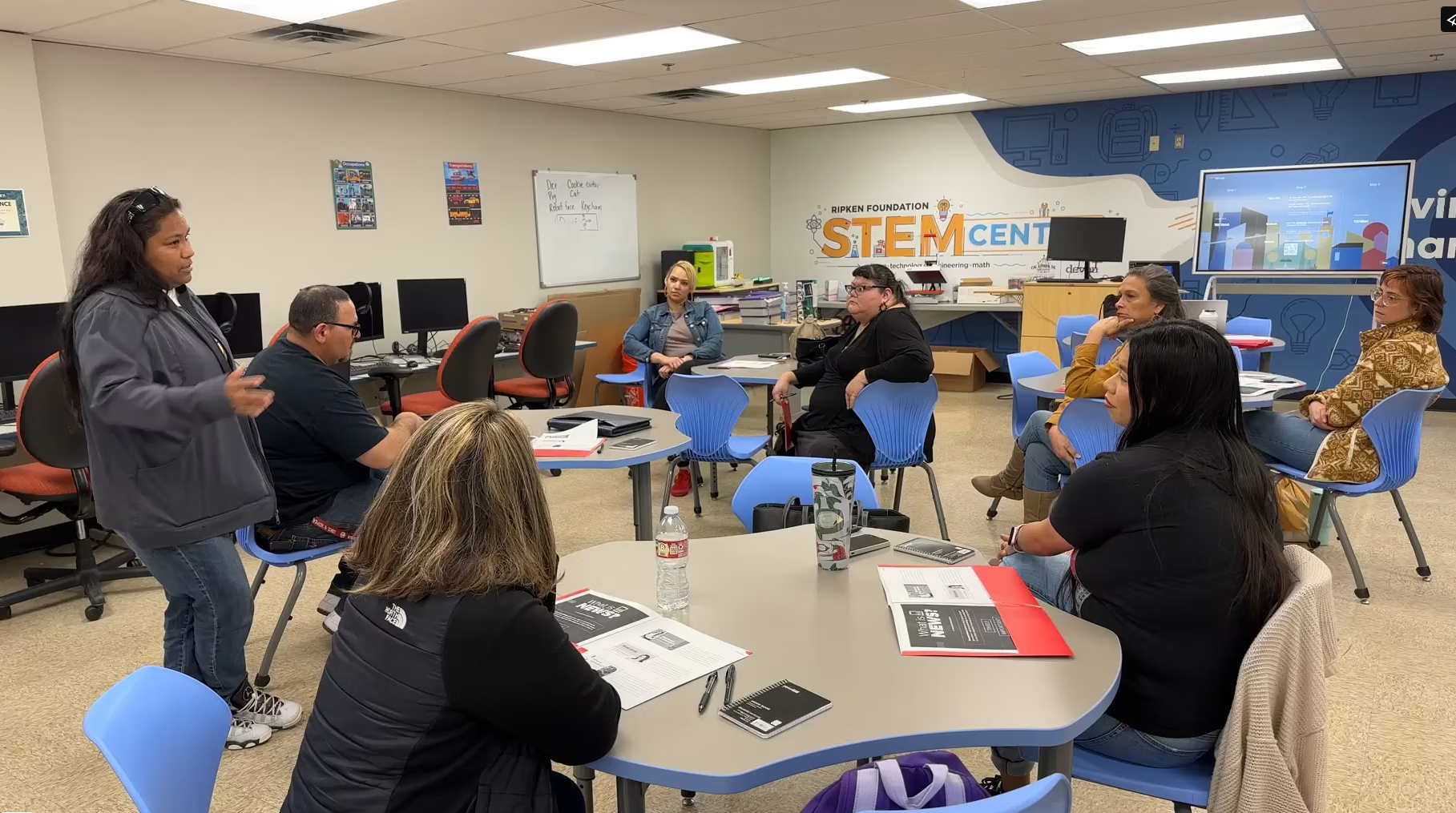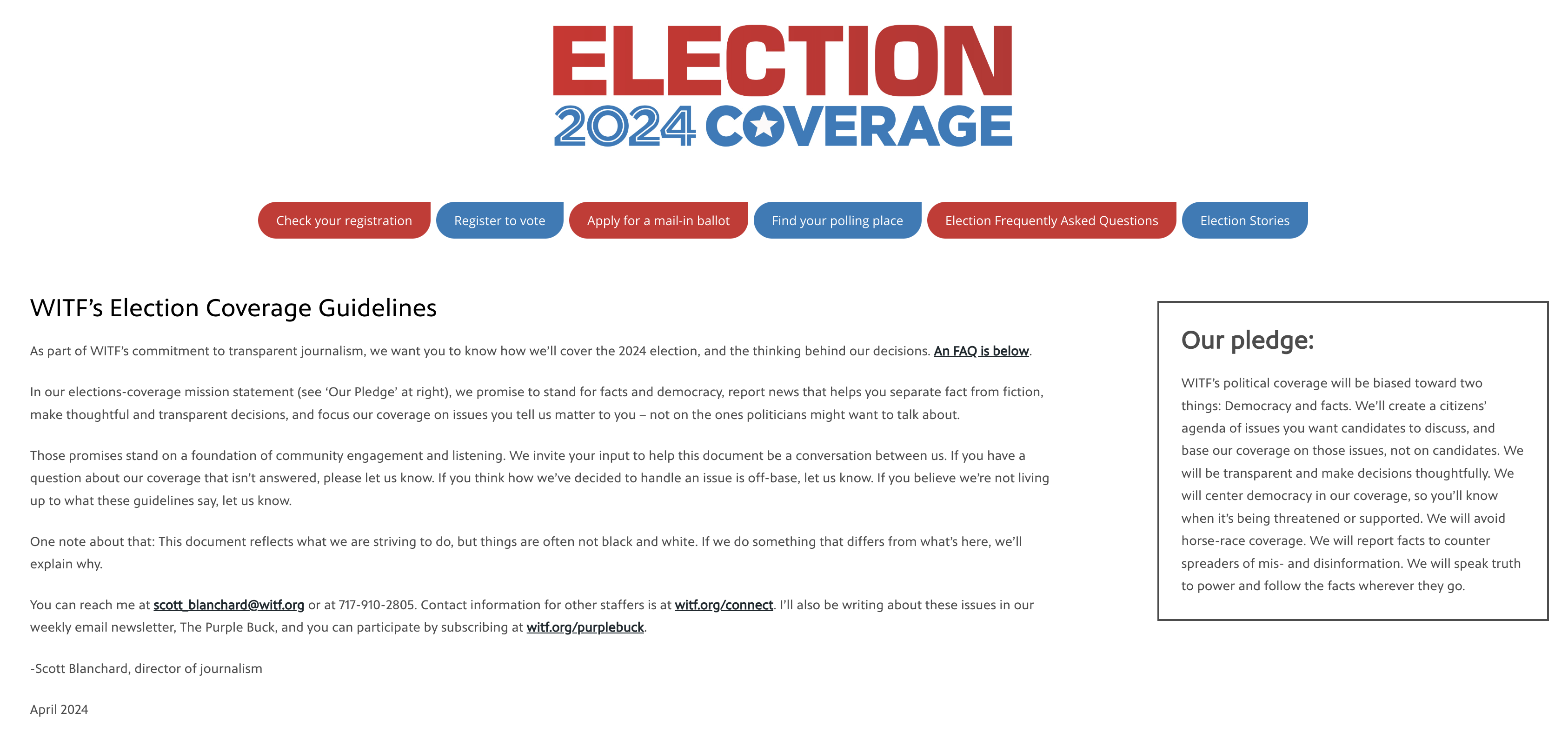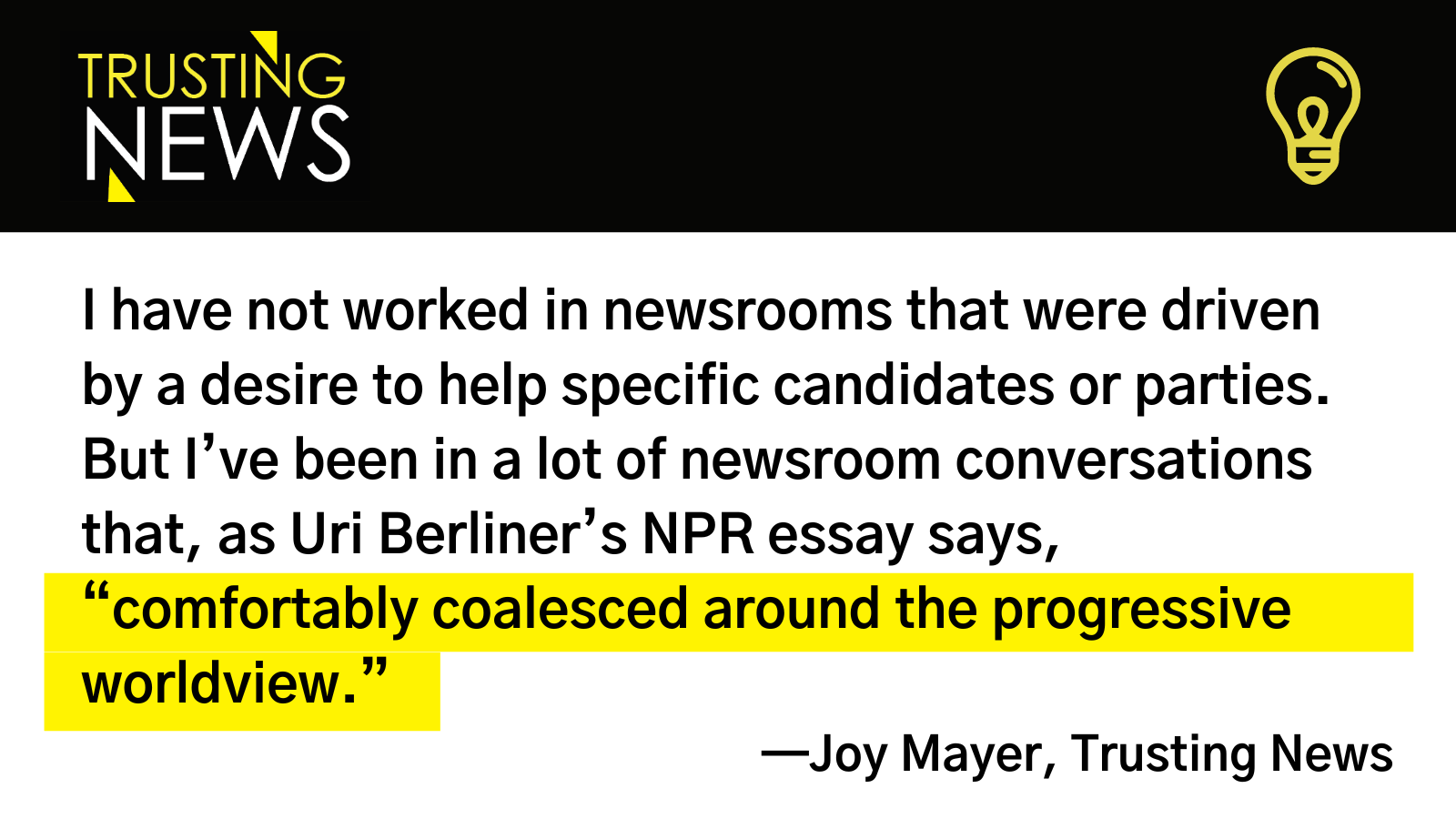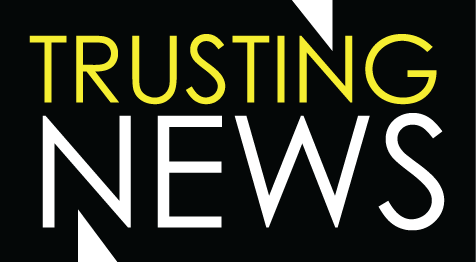
Don’t give up on people who have low trust in your work
Get on the record about how you cover democracy
We know a lot of people have incorrect assumptions about what motivates journalism and how decision-making actually works in newsrooms. That’s problematic overall, and it’s especially problematic when it comes to coverage of democracy and government.
It’s true that access to reliable, credible information is key to our communities’ ability to deliberate and self-govern. It’s also true that people only believe in the accuracy of information if they trust the people sharing it. And it’s especially true that if journalists give up on people who have low trust in their work, we’re making it more likely they will seek information from less credible sources.
That’s bad for journalists, and it’s bad for our democratic republic.
One way to earn the trust of the communities you serve is to be on the record about how you operate. In this post, we’ll discuss how to figure out what to explain about your coverage. And in a second post, we’ll walk through how to create a simple FAQ about how you operate.
Here are four steps to getting on the record about how you operate:
- Determine what you want people to know.
- Turn those facts into a list of questions.
- Use simple, accessible language to answer them.
- Figure out where to share those answers.
Step one: Determine what you want people to know
Once you’ve decided to get on the record about how your journalism operates, how do you pick what to focus on? What’s the best way to prioritize?
It’s most effective to base your transparency efforts on what people are curious about and what you most wish they knew about you or your operations.
Start by going directly to the source: Ask people what they want to know about your work.
You could do that in a stand-alone callout, like this one from the Seattle Times:
Callouts like this can be embedded in related stories and also shared on social media.
You can also invite questions within specific stories, perhaps alongside behind-the-scenes information.
Here are a few ways you could phrase the callout:
- We work hard to be fair in our reporting. How are we doing? What questions do you have about our processes?
- We took time today to explain how we make decisions. Did you find it interesting and worthwhile? What else would you like to know about our reporting process?
- We know this is a tough time to keep up with the news, and we want to be your most trusted source for information about our community. A shared set of facts and a place to talk about them are core to democracy. We’d love to hear from you: What questions can we answer about how our newsroom operates?
✨ More tips on how to ask for audience input about your work can be found in this Trust Kit.
Another way to get started with transparency is to keep track of what you wish people knew about your journalism.
How would your job (and your colleagues’ jobs) be easier if people understood some basic things about how you operate? What misassumptions do people have about your work?
What do your reporters hear in the field? What comes into your inboxes? What accusations or questions get thrown your way in comments — yes, even if people are yelling at you in all caps!
A helpful tool is to reframe those misassumptions and accusations as questions. Strip away the tone (and maybe the adjectives!), and get to the core of what someone clearly does not know about your work.
Here’s an example:
You might hear from the public:
“You cover this candidate more because you want her to win.“
Reframe that as a gap in the person’s understanding of how you operate. What do they clearly not know?
“How do journalists decide which races and candidates to focus coverage on?“
Now THAT’S a question a lot of people — including people operating in good faith with genuine curiosity — likely have. And it’s a question you can answer.
Step two: Turn those facts into a list of questions
At this point, you should have a good collection of what you wish people knew about your work. Turn each idea into a simply worded question. Be sure to phrase the questions in language people would actually use, not jargon.
On the topics of government, democracy and elections, your list might include questions like:
- How do journalists decide which races and candidates to focus coverage on?
- How do you work to be fair in your political coverage?
- Does your staff or organization have connections to candidates or parties?
- How do you fact-check candidates’ claims?
- How do you decide when to cover something negative about a candidate?
- How do you cover polls, and why does your news organization do your own polling?
You’ll likely also have a list of questions that could apply to your coverage generally, like:
- How do you decide what to cover?
- Who makes coverage decisions (and are those people in your newsroom or in a corporate office)?
- Why do you run AP (or other syndicated) stories?
- What does it mean to be independent?
- Why is your staff so much whiter than the community you cover?
- Why don’t you publish more positive stories?
Step three: Use simple, accessible language to answer them
As you think about how to answer the questions, it can be useful to imagine you’re answering them in person. Maybe you’re talking to someone you don’t know very well. Perhaps the topic comes up while you’re walking a couple of blocks with a neighbor, or while chatting with someone you know casually at a coffee shop.
The goal is to validate the question (not dismiss it) and to offer an answer that feels like it offers a real window into a real newsroom, not something that feels like it belongs in a company brochure.
Here are some great examples of approachable, clear language.
First, from Colorado Public Radio:
The post starts off strong by addressing the perception that news has an institutional bias:
“At CPR News, our mission is to serve all Coloradans, not a partisan sliver. As the election approaches, we wanted to explain more thoroughly what we’re doing to earn your trust every day.”
Here are excerpts from two of CPR’s answers:
How do we make editorial decisions about what stories to write, or what to cover?
“The questions we ask include: Does this affect actual people who live in our state? How, and how many? Does this help Coloradans understand each other? Does it help them understand the issues they will have to decide on? Is this information our readers and listeners are seeking at this moment? Is this topic already thoroughly covered in other outlets or will we bring something new with our story? We also as a newsroom set long-term priorities in all of our coverage, including elections, which help keep us focused on diving deep in some areas, and saying no to others.”
When covering different parties, how do we make sure coverage is equal? What about minor parties?
“Broadly speaking, we don’t have a running count to make sure we broadcast X number of Republicans and Democrats. But with each and every story, reporters and editors ask each other: Have we presented this issue fairly? If we find we have missed a perspective that deepens your understanding or presents a different way to look at an issue, we find a way to get it before you read or hear the story. That said, we are human, and when our readers and listeners draw our attention to something we overlooked, that sometimes leads to further coverage of an issue.”
Click through these additional examples:
- Seattle Times: Answers to your questions about The Seattle Times’ investigative journalism
- PolitiFact: Our standards of fairness, included at the end of a newsletter ; Have a comment ready to proactively address criticism you know you’re likely to get
- WCPO: How we handle candidate rallies
- Atlanta Journal-Constitution: How the AJC covers the Georgia Legislature ; What does it mean to be independent ; How and why we conducted a political poll ; Behind the scenes on a report about the campaign to undermine Georgia’s election
- WITF: WITF’s policies on transparency in fundraising
- KRCG: We make coverage decisions locally
- 11Alive: ‘Drawing Conclusions’ investigation into vaccines, as part of a series
What comes next: Figure out where to share those answers
Once you’ve spent the time and brainpower articulating your answers, it would be a great idea to make the most of them! You want to make sure your audience finds them, right? In another post, find ideas for how to draw attention to them as part of day-to-day coverage — including by creating a simple FAQ.
Let us know what you try!
Our team at Trusting News would love to see how you get on the record about your work, and we’re also happy to provide feedback. Send us a link at info@TrustingNews.org.
And find more strategies in our weekly newsletter, Trust Tips, and in our new Trust Kits, which provide step-by-step instructions for the basics of earning trust.
At Trusting News, we learn how people decide what news to trust and turn that knowledge into actionable strategies for journalists. We train and empower journalists to take responsibility for demonstrating credibility and actively earning trust through transparency and engagement. Learn more about our work, vision and team. Subscribe to our Trust Tips newsletter. Follow us on Twitter and LinkedIn.
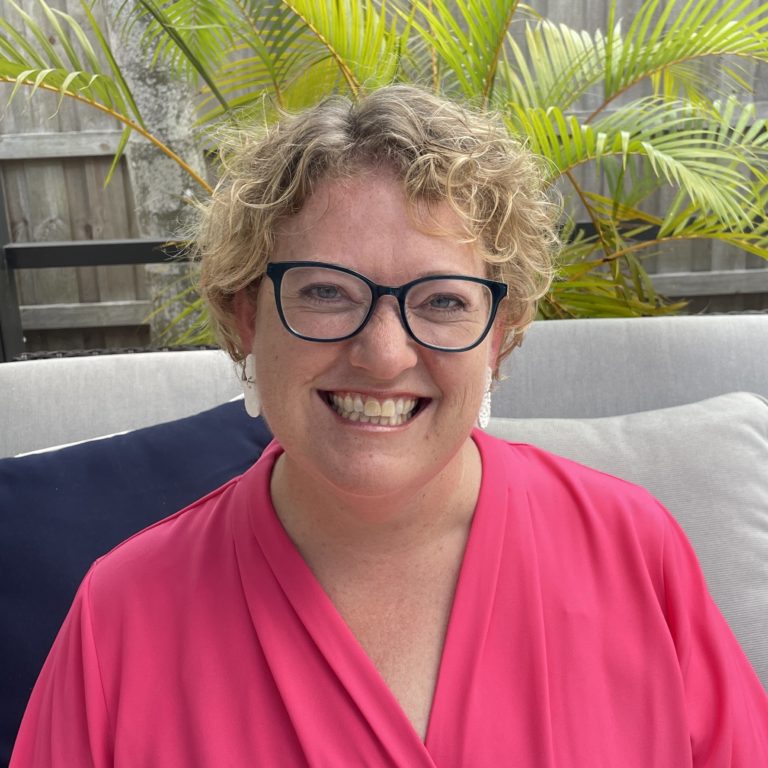
Director Joy Mayer (she/her) founded Trusting News in 2016 after a 20-year career in newsrooms and teaching. She spent 12 years at the Missouri School of Journalism, where she created an audience engagement curriculum and a community outreach team in the newsroom of the Columbia Missourian and also taught web design and print design. She lives in Sarasota, Florida, and can be reached at joy@TrustingNews.org or on Twitter @mayerjoy.
